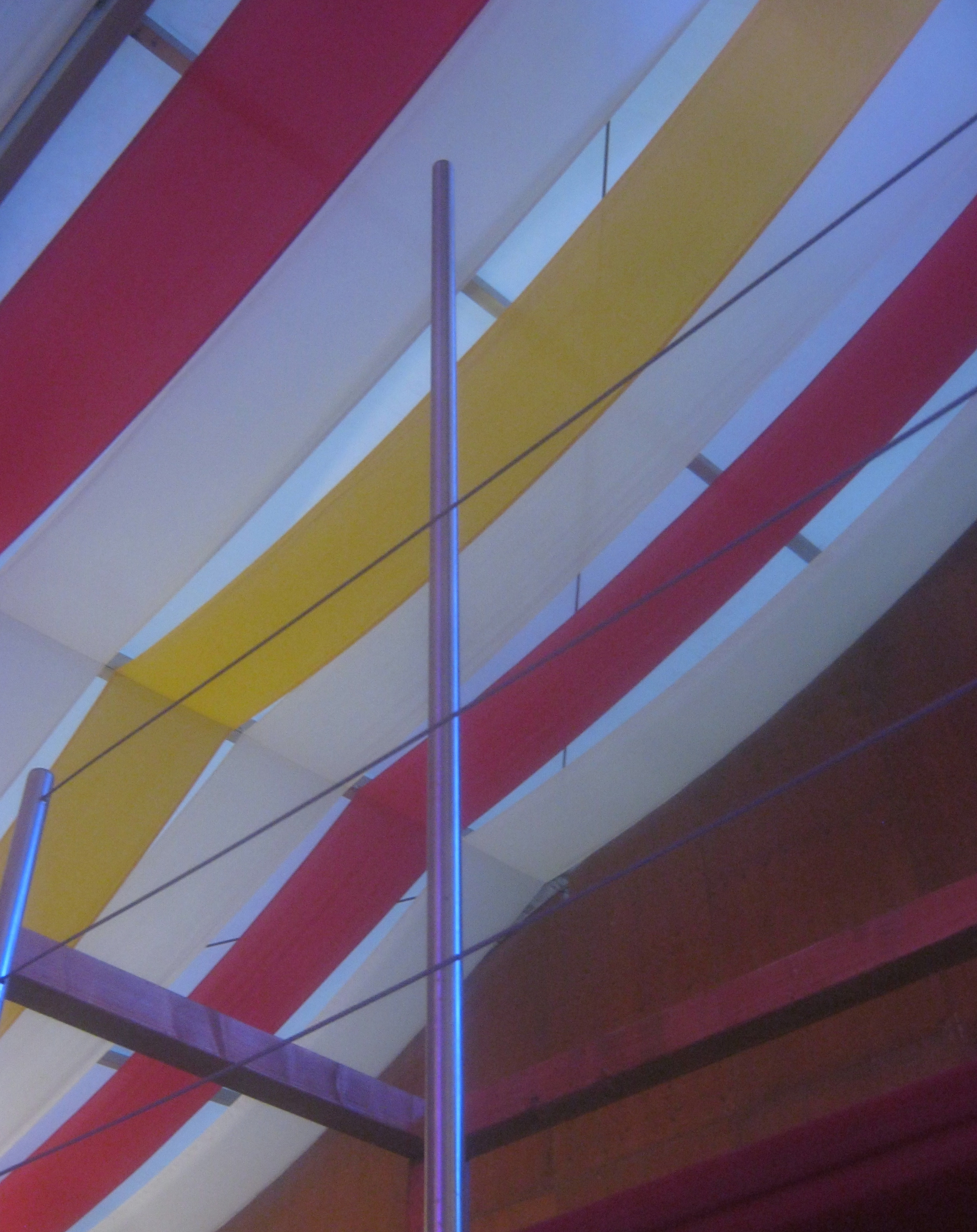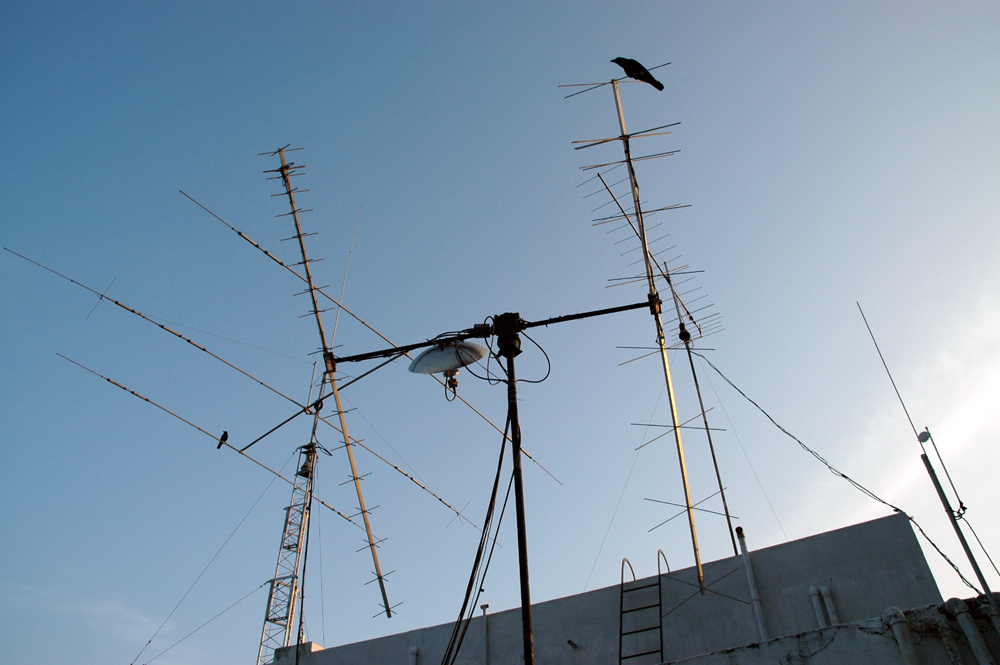|
Automatic Channel Memory System
An automatic channel memory system (ACMS) is a system in which a digitally controlled radio tuner such as a TV set or VCR could search and memorize TV channels automatically. While more common in television, it can also be used to store presets for radio stations. This is often called a channel scan, though that may also refer to a " preview" mode which plays each station it finds for a few seconds and then moves on to the next, without affecting memory. Channel scanning A typical TV device allows an automatic channel scan to be performed from a menu accessed by a button on the TV set, or sometimes only on the remote control. This applied first to analog TV sets — sometimes those with digital LED displays, or later always those with on-screen displays. These simply searched for the video carrier signal on every channel. (Before the advent of ACMS, many sets would search for the next channel every time it was changed.) It now also applies to digital TV, which must not only ... [...More Info...] [...Related Items...] OR: [Wikipedia] [Google] [Baidu] |
Radio Tuner
In electronics and radio, a tuner is a type of receiver subsystem that receives RF transmissions, such as AM or FM broadcasts, and converts the selected carrier frequency into a form suitable for further processing or output, such as to an amplifier or loudspeaker. A tuner is also a standalone home audio product, component, or device called an AM/FM tuner or a stereo tuner that is part of a hi-fi or stereo system, or a TV tuner for television broadcasts. The verb ''tuning'' in radio contexts means adjusting the receiver to detect the desired radio signal carrier frequency that a particular radio station uses. Tuners were a major consumer electronics product in the 20th century but in practice are often integrated into other products in the modern day, such as stereo or AV receivers or portable radios. Design history and overview The purpose of a tuner's design is to reduce noise and have a strong ability to amplify the wanted signal. Tuners may be monophonic or s ... [...More Info...] [...Related Items...] OR: [Wikipedia] [Google] [Baidu] |
Power Outage
A power outage, also called a blackout, a power failure, a power blackout, a power loss, a power cut, or a power out is the complete loss of the electrical power network supply to an end user. There are many causes of power failures in an electricity network. Examples of these causes include faults at power stations, damage to Electric power transmission, electric transmission lines, Electrical substation, substations or other parts of the electricity distribution, distribution system, a short circuit, Cascading failure#Cascading failure in power transmission, cascading failure, fuse (electrical), fuse or circuit breaker operation. Power failures are particularly critical at sites where the environment and public safety are at risk. Institutions such as hospitals, Sewage Treatment, sewage treatment plants, and mining, mines will usually have backup power sources such as emergency power system, standby generators, which will automatically start up when electrical power is lost ... [...More Info...] [...Related Items...] OR: [Wikipedia] [Google] [Baidu] |
Direct Tuning
Direct may refer to: Mathematics * Directed set, in order theory * Direct limit of (pre), sheaves * Direct sum of modules, a construction in abstract algebra which combines several vector spaces Computing * Direct access (other), a method of accessing data in a database * Direct connect (other), various methods of telecommunications and computer networking * Direct memory access, access to memory by hardware subsystems independently of the CPU Entertainment * ''Direct'' (Tower of Power album) * ''Direct'' (Vangelis album) * ''Direct'' (EP), by The 77s Other uses * Direct (music symbol), a music symbol used in music notation that is similar to a catchword in literature * Nintendo Direct, an online presentation frequently held by Nintendo * Mars Direct, a proposal for a crewed mission to Mars * DIRECT, a proposed space shuttle-derived launch vehicle * DirectX, a proprietary dynamic media platform * Direct current, a direct flow of electricity * Dire ... [...More Info...] [...Related Items...] OR: [Wikipedia] [Google] [Baidu] |
LPTV
Low-power broadcasting is broadcasting by a broadcast station at a low transmitter power output to a smaller service area than "full power" stations within the same region. It is often distinguished from "micropower broadcasting" (more commonly " microbroadcasting") and broadcast translators. LPAM, LPFM and LPTV are in various levels of use across the world, varying widely based on the laws and their enforcement. Canada Radio communications in Canada are regulated by the Radio Communications and Broadcasting Regulatory Branch, a branch of Industry Canada, in conjunction with the Canadian Radio-television and Telecommunications Commission (CRTC). Interested parties must apply for both a certificate from Industry Canada and a license from CRTC in order to operate a radio station. Industry Canada manages the technicalities of spectrum space and technological requirements whereas content regulation is conducted more so by CRTC. LPAM stations are authorized to operate with less t ... [...More Info...] [...Related Items...] OR: [Wikipedia] [Google] [Baidu] |
Digital Subchannel
In broadcasting, digital subchannels are a method of transmitting more than one independent program stream simultaneously from the same digital radio or television station on the same radio frequency channel. This is done by using data compression techniques to reduce the size of each individual program stream, and multiplexing to combine them into a single signal. The practice is sometimes called " multicasting". ATSC television United States The ATSC digital television standard used in the United States supports multiple program streams over-the-air, allowing television stations to transmit one or more subchannels over a single digital signal. A virtual channel numbering scheme distinguishes broadcast subchannels by appending the television channel number with a period digit (".xx"). Simultaneously, the suffix indicates that a television station offers additional programming streams. By convention, the suffix position ".1" is normally used to refer to the station's main d ... [...More Info...] [...Related Items...] OR: [Wikipedia] [Google] [Baidu] |
TV Antenna
A television antenna, also called a television aerial (in British English), is an antenna specifically designed for use with a television receiver (TV) to receive terrestrial over-the-air (OTA) broadcast television signals from a television station. Terrestrial television is broadcast on frequencies from about 47 to 250 MHz in the very high frequency (VHF) band, and 470 to 960 MHz in the ultra high frequency (UHF) band in different countries. Television antennas are manufactured in two different types: ''indoor'' and ''outdoor'' antennas. Indoor antennas are designed to be located on top of or next to the television set, but are ideally placed near a window in a room and as high up as possible for the best reception. The most common types of indoor antennas are the dipole ("rabbit ears"), which work best for VHF channels, and loop antennas, which work best for UHF. Outdoor antennas on the other hand are designed to be mounted on a mast on top of the owner's house, ... [...More Info...] [...Related Items...] OR: [Wikipedia] [Google] [Baidu] |
Antenna Rotator
An antenna rotator (or antenna rotor) is a device used to change the orientation (geometry), orientation, within the horizontal plane, of a directional antenna. Most Antenna (radio), antenna rotators have two parts, the rotator unit and the controller. The controller is normally placed near the equipment which the antenna is connected to, while the rotator is mounted on the antenna mast directly below the antenna. Rotators are commonly used in amateur radio and military communications installations. They are also used with TV and FM broadcasting, FM antennas, where stations are available from multiple directions, as the cost of a rotator is often significantly less than that of installing a second antenna to receive stations from multiple directions. Rotators are manufactured for different sizes of antennas and installations. For example, a consumer TV antenna rotator has enough torque to turn a TV/FM or small amateur radio, ham antenna. These units typically cost around US$70 . ... [...More Info...] [...Related Items...] OR: [Wikipedia] [Google] [Baidu] |
Radio Propagation
Radio propagation is the behavior of radio waves as they travel, or are wave propagation, propagated, from one point to another in vacuum, or into various parts of the atmosphere. As a form of electromagnetic radiation, like light waves, radio waves are affected by the phenomena of reflection (physics), reflection, refraction, diffraction, absorption (electromagnetic radiation), absorption, polarization (waves), polarization, and scattering. Understanding the effects of varying conditions on radio propagation has many practical applications, from choosing frequencies for amateur radio communications, international shortwave Broadcasting, broadcasters, to designing reliable Mobile phone, mobile telephone systems, to radio navigation, to operation of radar systems. Several different types of propagation are used in practical radio transmission systems. ''Line-of-sight propagation'' means radio waves which travel in a straight line from the transmitting antenna to the receiving ante ... [...More Info...] [...Related Items...] OR: [Wikipedia] [Google] [Baidu] |
Digital Television Adapter
A digital television adapter (DTA), commonly known as a converter box, DTV converter , or decoder box, is a television tuner that receives a digital television (DTV) transmission, and converts the digital signal into an analog signal that can be received and displayed on an analog television set. Some also have an HDMI output since some TVs with HDMI do not have a digital tuner. The input digital signal may be over-the-air terrestrial television signals received by a television antenna, or signals from a digital cable system. It normally does not refer to satellite TV, which has always required a set-top box either to operate the big satellite dish, or to be the integrated receiver/decoder (IRD) in the case of direct-broadcast satellites (DBS). In North America and South Korea, these ATSC tuner boxes convert from ATSC to NTSC, while in most of Europe and other places such as Australia and most Asian countries, they convert from Digital Video Broadcasting (DVB) to PAL, and in J ... [...More Info...] [...Related Items...] OR: [Wikipedia] [Google] [Baidu] |
Favorites
In the context of the World Wide Web, a bookmark is a Uniform Resource Identifier (URI) that is stored for later retrieval in any of various storage formats. All modern web browsers include bookmark features. Bookmarks are called favorites or Internet shortcuts in Internet Explorer and Microsoft Edge, and by virtue of that browser's large market share, these terms have been synonymous with ''bookmark'' since the First Browser War. Bookmarks are normally accessed through a menu in the user's web browser, and folders are commonly used for organization. In addition to bookmarking methods within most browsers, many external applications offer bookmarks management. Bookmarks have been incorporated in browsers since the ViolaWWW browser in 1992, and Mosaic browser in 1993. Bookmark lists were called ''Hotlists'' in Mosaic and in previous versions of Opera; this term has faded from common use. Cello, another early browser, also had bookmarking features. With the advent of social boo ... [...More Info...] [...Related Items...] OR: [Wikipedia] [Google] [Baidu] |



